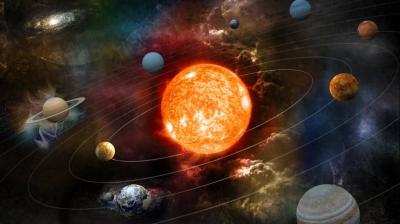The sky over the Arab world will witness today, Wednesday, the closest conjunction of the planets Mercury and Mars at dusk, with less than 0.1 degrees separating them in the western horizon, allowing both planets to share the same field of view in a telescope. The Jeddah Astronomical Society disclosed in a report that Venus will first be observed shortly after sunset, and over time, these two planets will appear below Venus, but close to the horizon, with Mercury to the right of the observer and Mars next to it.
Generally, observing this planetary conjunction will be easier for residents in the southern hemisphere compared to those in northern latitudes, as both Mercury and Mars will remain above the horizon longer after sunset at southern latitudes. In contrast, they will set shortly after sunset at northern latitudes. For those in the mid-northern latitudes, binoculars may be needed to see Mercury and Mars. Mercury shines eight times brighter than Mars, so when Mercury is visible to the naked eye, binoculars are used to see Mars embracing Mercury in the same field of view.
Scientifically, two planets are said to be in conjunction when one is north and the other is south of the other in the right ascension, with right ascension on the celestial sphere equivalent to longitude on the Earth's surface, according to the president of the Jeddah Astronomical Society, Engineer Majid Abu Zahra. He added, "The closest planetary conjunction occurs when two planets are separated by less than 0.1 degrees (6 arc minutes = 360 arc seconds) on the celestial sphere. Therefore, the conjunction of Mercury and Mars today is the only closest conjunction between two planets in 2021."
The last time a visible closest conjunction of less than 0.1 degrees occurred between Mercury and Mars was on September 16, 2017. It will happen again on August 23, 2032.




